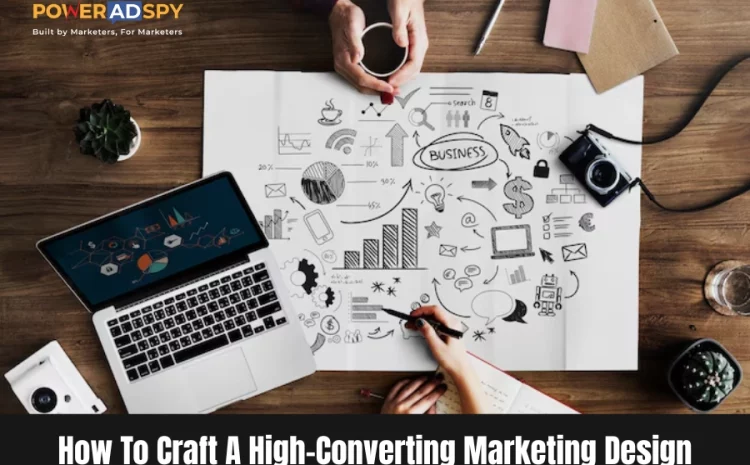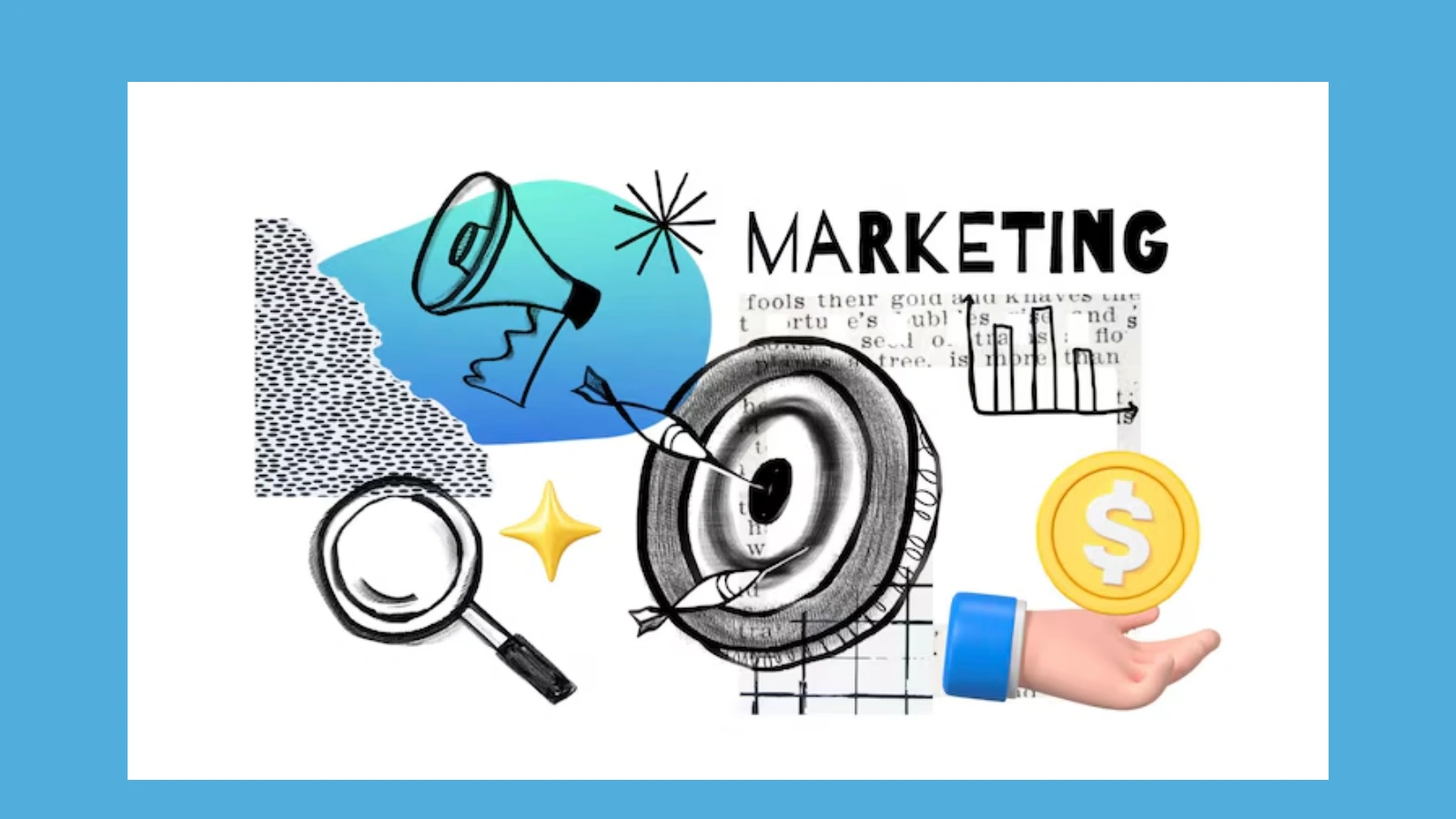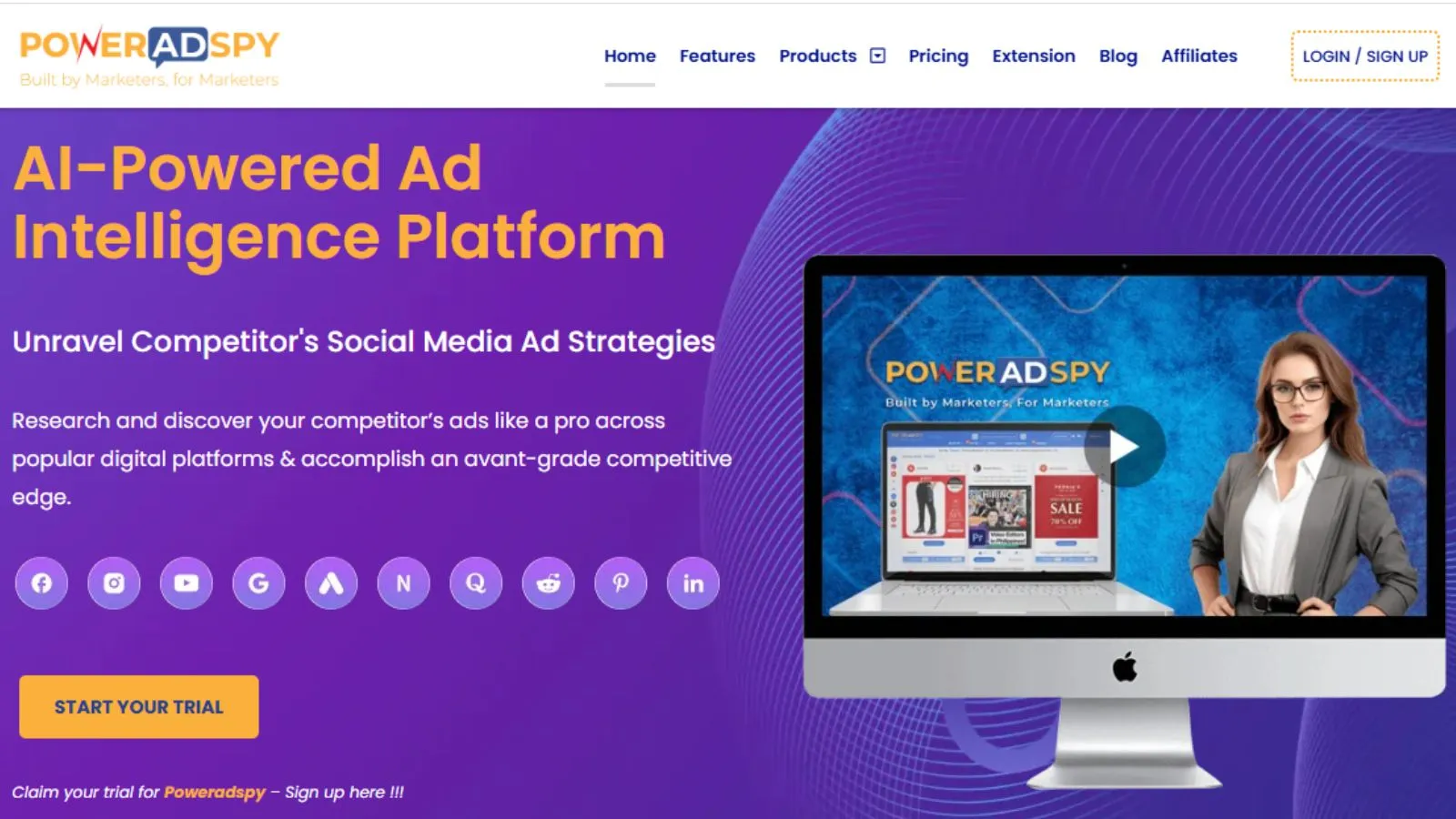How To Craft A High-Converting Marketing Design?
Standing out in a crowded market isn’t just about offering a great product or service; it’s about how you visually communicate your brand. That’s where marketing design comes in. It’s the combination of visuals, strategy, and storytelling that helps you connect with your audience at a glance.
From a scroll-stopping Instagram post to a well-crafted email layout, strong design is what makes people pay attention.
Design today isn’t just about looking good; it’s about being strategic. From social media graphics to landing pages, every element needs to serve a purpose. And with rapid changes in digital trends and design tools, especially AI-powered ones, marketers need to stay sharp to keep up.
In this blog, we’ll dive into what makes marketing design work in 2025. From essential design principles to emerging tools and techniques, you’ll learn how to craft visuals that not only grab attention but also drive results.
Whether you’re designing for ads, websites, or social media, this guide will help you master the art of marketing design.
Hit ‘Play’ Button & Tune Into The Blog!
What Is Marketing Design?
It is the process of creating visual content that supports and enhances a brand’s marketing goals. It includes everything from social media graphics and digital ads to website visuals, brochures, and packaging. The goal isn’t just to make something look good; it’s to communicate a message clearly and persuasively.
Think of marketing design as a blend of creativity and strategy. Every color, font, and layout choice is intentional, aimed at catching someone’s eye and guiding them toward a specific action.
With so much content competing for attention, your visuals need to work harder than ever. A strong design can build trust, boost brand recognition, and turn casual viewers into loyal customers.
Why Marketing Design Matters In Today’s Digital World?
A strong performance marketing design can be the difference between getting scrolled past or making someone stop and engage. In a world where people are bombarded with content every second, businesses have only a few moments to make a memorable impression.
That’s where design steps in; it helps deliver your message quickly, clearly, and with emotion that resonates.
Effective design goes beyond just looking good. It creates a visual language that connects with your audience and guides them toward action, whether it’s clicking a link, signing up, or making a purchase. Thoughtful use of color, typography, and layout can evoke trust, excitement, or curiosity in an instant.
Marketing design also plays a crucial role in building and maintaining brand identity. When your visuals are consistent across all touchpoints, social media, websites, ads, and print, it reinforces who you are as a brand.
This consistency boosts recognition, encourages engagement, and helps turn first-time visitors into loyal followers. Without strong design, even the best campaigns risk falling flat.
Also Read:
What Is Performance Marketing- Why And How To Start Today?
Core Elements Of Effective Marketing Design
At the heart of every successful marketing campaign is a design that not only looks great but also communicates effectively. Whether you’re crafting a social media post, a landing page, or a product brochure, certain design elements work together to grab attention and drive action.
Let’s take a closer look at the core components that make up a strong and impactful marketing design:
1. Visual Hierarchy and Layout:
Visual hierarchy is all about leading the viewer’s eye. Through size, spacing, contrast, and placement, you can guide attention from the most important element, like a headline or product feature, down to the finer details.
A well-structured layout prevents visual clutter and ensures your message is easy to digest at a glance. Think of it like storytelling, every element has its place and role in the flow.
2. Color Psychology:
Colors are more than just decoration; they influence how people feel and react. Understanding color psychology allows you to align your brand’s mood with your message. For instance, blue builds trust and calm, red grabs attention and creates urgency, while green evokes freshness and growth.
When used strategically, color choices can enhance user experience and subtly shape decision-making.
3. Typography:
Typography isn’t just about choosing a nice-looking font; it’s about making content readable, accessible, and on-brand. Fonts communicate personality. A bold sans-serif might suggest confidence and innovation, while a serif font can imply heritage and reliability.
The key is consistency: using a clear hierarchy of headings, subheadings, and body text helps users absorb information effortlessly.
4. Imagery and Illustration:
Visuals can make or break your message. Authentic, high-quality images immediately build credibility and create emotional connections. While stock photos are convenient, original content, especially real customer photos or behind-the-scenes shots, adds authenticity.
Custom illustrations can also help explain abstract concepts or reinforce brand identity in a unique, memorable way.
By mastering these foundational elements, you can create marketing materials that not only catch the eye but also inspire action.
Marketing Design Across Channels
Marketing design isn’t just about making things look good; it’s about adapting your visual message to suit different platforms while staying true to your brand identity.
Each channel has its own set of best practices and audience expectations, so designs need to be tailored accordingly to maximize impact.
Social Media:
On platforms like Instagram, TikTok, and Facebook, visuals are everything. Your design must capture attention within the first few seconds of a scroll.
Use bold colors, minimal text, and high-contrast imagery. Content should be mobile-optimized, sized correctly for each platform, and tailored to quick, engaging interactions, such as carousels, reels, or stories.
Email Campaigns:
Email design needs a careful balance. Too many images can slow load times or trigger spam filters, while long walls of text can lose the reader’s interest. Stick to clean, scannable layouts with one primary message, a compelling subject line, and a clear call to action. Ensure your design is visually appealing on both desktop and mobile devices.
Websites and Landing Pages:
Web and landing page design should prioritize user experience. This means clean, uncluttered layouts, easy-to-read fonts, and logical navigation.
Use visual cues like arrows, buttons, and whitespace to guide visitors toward your CTA. Responsiveness is key, your design must adapt to any screen size without sacrificing functionality or aesthetics.
Print Media:
While digital dominates, print still plays a role in branding. Whether it’s flyers, posters, packaging, or billboards, print design must be bold and easy to understand from a distance.
Use high-resolution images, consistent branding elements, and layout principles that translate well to physical formats. QR codes or short links can help bridge the gap between print and digital.
By designing specifically for each channel while keeping your brand visuals consistent, you create a seamless and professional experience for your audience, no matter where they interact with you.
How To Craft A High-Converting Marketing Design?
Designing visuals that convert is about blending creativity with strategy. It’s not just about aesthetics, it’s about knowing what drives your audience to take action.
Here are three key principles to guide your process:
Understand Your Audience:
Before you start designing, you need to know who you’re talking to. A design that appeals to teenagers might feel out of place to corporate professionals.
Tailor your colors, imagery, and tone to match your audience’s tastes, expectations, and habits. The better you understand them, the more likely your design will resonate.
Align With Brand Voice:
Your visuals should showcase and align with your brand’s personality. A fun and energetic brand might use bright colors, playful illustrations, and bold fonts, while a luxury brand benefits from minimalistic layouts and sophisticated typography.
Consistency in tone and style builds trust and recognition across all touchpoints.
Test and Iterate:
Don’t rely on assumptions; test your designs. A/B testing elements like layout, button placement, or headline colors can reveal what drives clicks or conversions.
Use real data to refine your approach, and treat design as a dynamic process that evolves with audience feedback and campaign performance.
Marketing Design Examples That Drive Results
Let’s explore some real-world marketing design examples:
- Spotify’s Wrapped Campaign: Combining user data with vibrant, dynamic visuals to create personalized marketing gold.
- Nike’s Email Newsletters: Sleek designs that stay true to the brand and effectively promote new drops and offers.
- Dropbox’s Redesign: Moving from a bland, corporate style to colorful and quirky visuals that reflect creativity.
These examples prove that strong design directly impacts brand perception and performance.
How To Design An AI Marketing Strategy With Visuals?
AI is changing the way marketers approach design by making the process smarter, faster, and more personalized. To build an effective AI-driven visual strategy, start by using AI to analyze audience behavior and preferences.
This insight helps you create visuals that are not only relevant but also more likely to capture attention.
Modern AI tools can suggest layout options, ideal color combinations, and even auto-generate visual content based on performance data. This streamlines the design process and ensures your visuals are optimized for higher engagement.
AI can also personalize content in real-time, delivering different versions of ads based on a user’s location, online habits, or past interactions, creating a more meaningful and targeted experience.
Also Read:
Online Advertising: Everything You Need To Know About
Follow These Steps To Find Best Ads In Your Niche | PowerAdSpy
The Importance Of Ad Intelligence In Marketing Design
Design decisions should be informed by more than just creativity, they need insights. That’s where tools like PowerAdSpy, the most powerful social ad intelligence software, come in.
PowerAdSpy allows marketers to analyze millions of successful ads from over 100+ countries. It gives you complete visibility into your competitors’ ad strategies, showing you what works, where it works, and why. You can research ads by niche, keyword, domain, or advertiser, view real-time engagement data, and even bookmark high-performing creatives for future campaigns.
With features like ad position filtering, call-to-action sorting, and geo-targeting, PowerAdSpy empowers data-driven marketing design decisions. It removes the guesswork, so you design with confidence and conversion in mind. If you’re serious about outperforming the competition, investing in an ad spy tool like PowerAdSpy gives you a significant edge in crafting campaigns that work.
How PowerAdSpy Can Help You With Your Ad Designs?
Creating high-converting visuals isn’t about guessing; it’s about knowing what already works. That’s where PowerAdSpy comes into play.
This ads spy tool helps you research and analyze what kinds of visuals, formats, and messages are resonating most with audiences across different advertising platforms.
Here are the key features of it:
- Filter by Ad Positions:
Analyze where ads are placed (News Feed vs. Sidebar) to discover what positions drive the best conversions. - Complete Visibility:
See live ad posts directly from the platform and review real-time engagement data, including likes, comments, and shares.
- Massive Ad Database:
Access millions of ads from over 100+ countries. Thousands of fresh creatives are added daily, so you’re always on trend.
- Niche-Specific Searches:
Find ads based on specific keywords, advertisers, Shopify stores, or even domains. This lets you monitor your competitors closely and reverse-engineer their winning strategies. - Bookmarking Feature:
Quickly save high-performing ad creatives to your library for future reference. - Powerful Sorting Tools:
Discover the best-performing ads by sorting based on engagement, date, CTA type, and more, helping you spot patterns that convert. - Visual Format Flexibility:
Study both video and image-based ads to see which formats work best for your industry. You can even download top video ads for creative inspiration.
- GEO-Targeting and CTA Insights:
Understand where top-performing ads are running and which CTAs they use most often, giving you a competitive edge in ad strategy.
With these amazing features, PowerAdSpy gives you a backstage pass to analyze creative designs from your competitors that are doing best in your industry. By replicating their best design ideas, you can also create better designs that convert best.
Common Mistakes In Marketing Design And How To Avoid Them
Even experienced marketers make design blunders. Here are common mistakes and how to fix them:
Overcrowded Layouts:
Simplicity sells. Too many elements confuse viewers. Stick to the essentials and create breathing room.
Inconsistent Branding:
Using multiple color palettes or fonts across platforms dilutes your brand identity. Maintain consistency in every visual touchpoint.
Poor Readability:
Fancy fonts may look cool, but if they’re hard to read, especially on mobile, users will scroll past.
Ignoring Mobile Users:
Design must be responsive. Mobile-first isn’t just a trend; it’s a necessity.
Conclusion
Marketing design is about more than just visual appeal, it’s about creating content that connects and converts. By focusing on clear layout, strategic color use, consistent branding, and audience relevance, you can design assets that perform across all platforms.
Tools like PowerAdSpy help you stay ahead by showing what works in real-time. With AI-driven insights and a strong grasp of design fundamentals, you can craft visuals that not only grab attention but also drive real results.
Keep testing, learning, and refining to ensure your marketing design stays effective and aligned with your goals.
FAQs
1. How do you measure the effectiveness of a marketing design?
Ans. Although the blog mentions testing and iteration, it doesn’t cover specific KPIs like click-through rates, conversion rates, bounce rates, or engagement metrics that help evaluate a design’s success.
2. How often should you update your marketing design strategy?
Ans. With trends, tools, and audience preferences evolving rapidly, this question addresses how frequently brands should audit or refresh their visual approach to stay relevant and effective.
3. What is the difference between marketing design and graphic design?
Ans. Marketing design focuses on visuals that drive action and support business goals, like increasing conversions or brand awareness. Graphic design, on the other hand, is broader and may include artistic or informational work without a strategic intent. The key distinction is purpose; marketing design is always results-driven.
4. How often should I update my marketing visuals?
Ans. Marketing visuals should be updated regularly to reflect seasonal changes, product updates, and evolving design trends. A refresh every few months or after performance drops helps keep content relevant and engaging. Consistent updates also show your audience that your brand is active and current.











